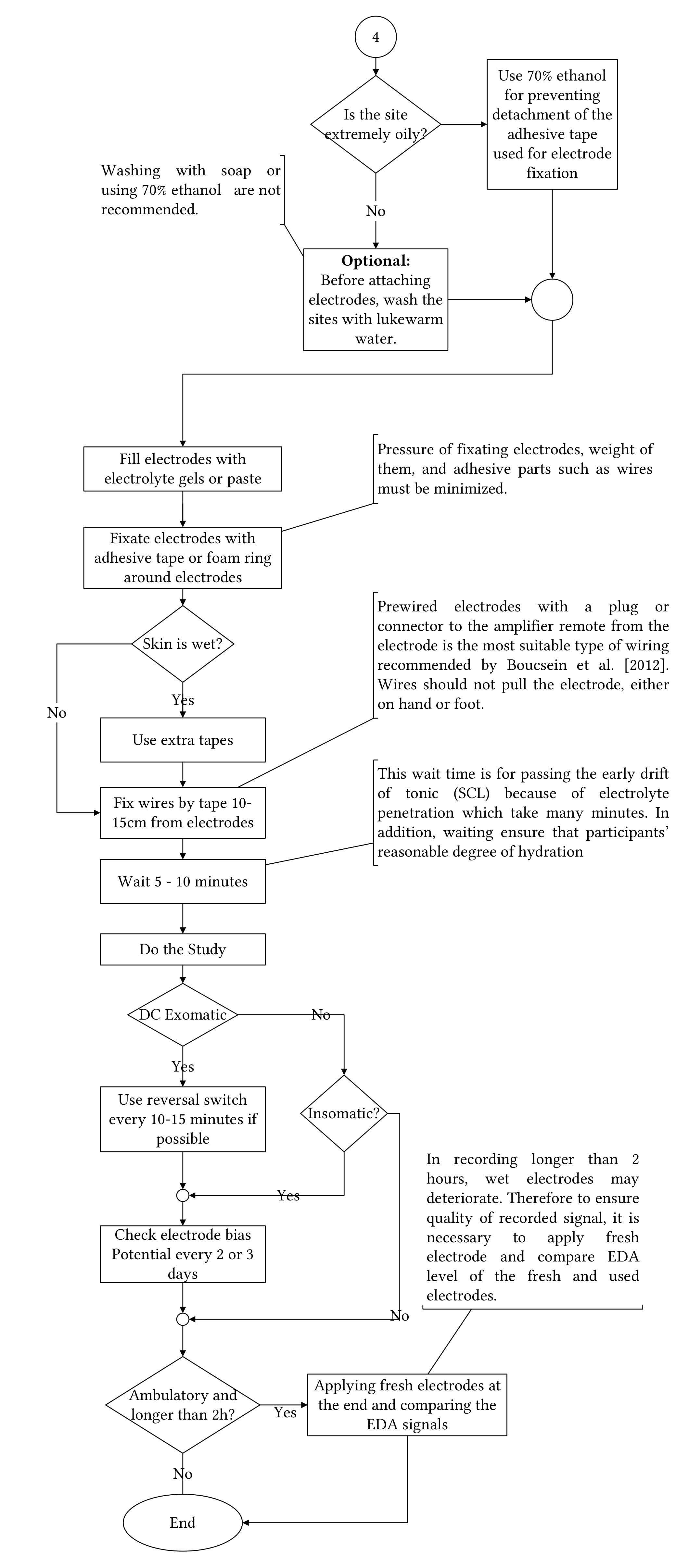DATA COLLECTION
Before beginning any data collection, researchers have to ensure the proper preparation of the part of the skin where the electrode will be attached to, e.g., by washing it with lukewarm water. If required, researchers should apply electrolyte on the electrodes and attach them to the skin of the participant. Then, they should wait 5-10 minutes to make participants ready for the recording for optimal electrical contact with the sweat glands Boucsein et al. [8]. Furthermore, the risk of electrolytes influencing the discharge and absorption potential of the ducts can be mitigated by waiting for 5-10 minutes after applying the electrolyte [8]. As the study progresses, researchers must check for a potential electrical drift from time to time, which long-term studies are especially prone to. Drifts usually appear as climbing tonic SCL signal components [9]. The main problem with this is to differentiate if a drift is caused by tonic processes or by artefacts. If a drift is detected, e.g., by comparing to a separate baseline recording [21] (see Braithwaite et al. [9] for a detailed guide on how to differentiate drift from tonic processes). We developed a summarizing flowchart of the steps researchers must take for running an EDA study according to Boucsein et al. [8]’s recommendations and presented these steps in detail in Figure 1 and 2.

